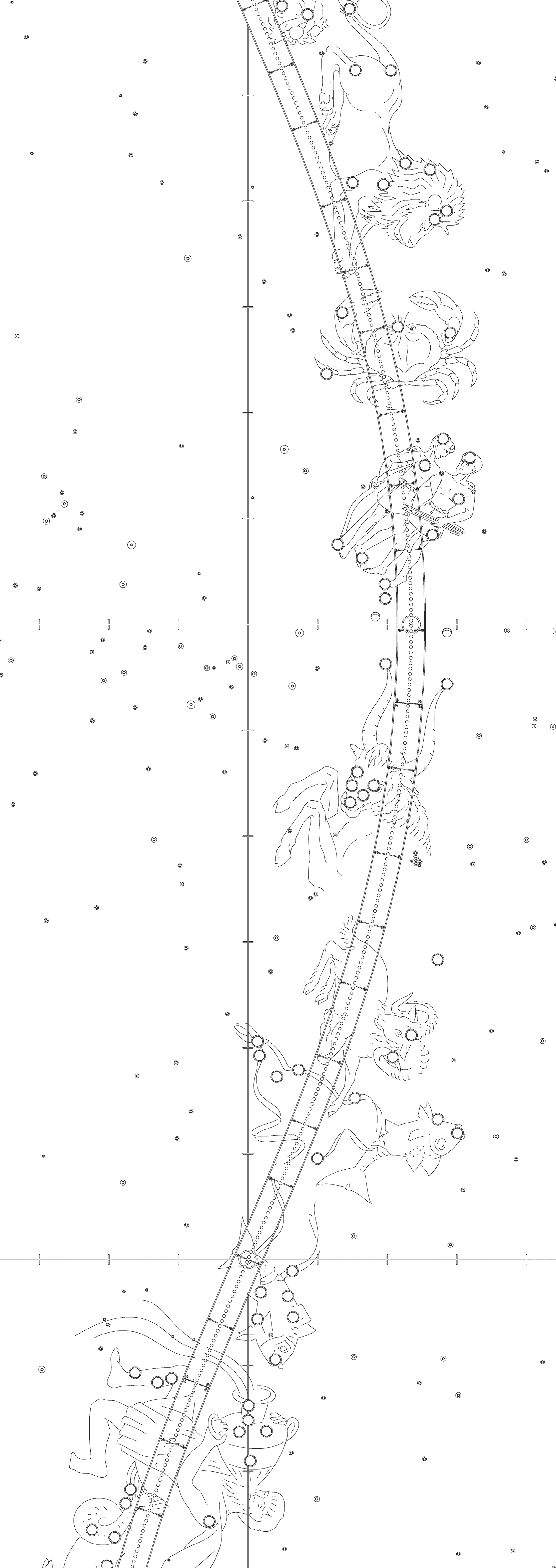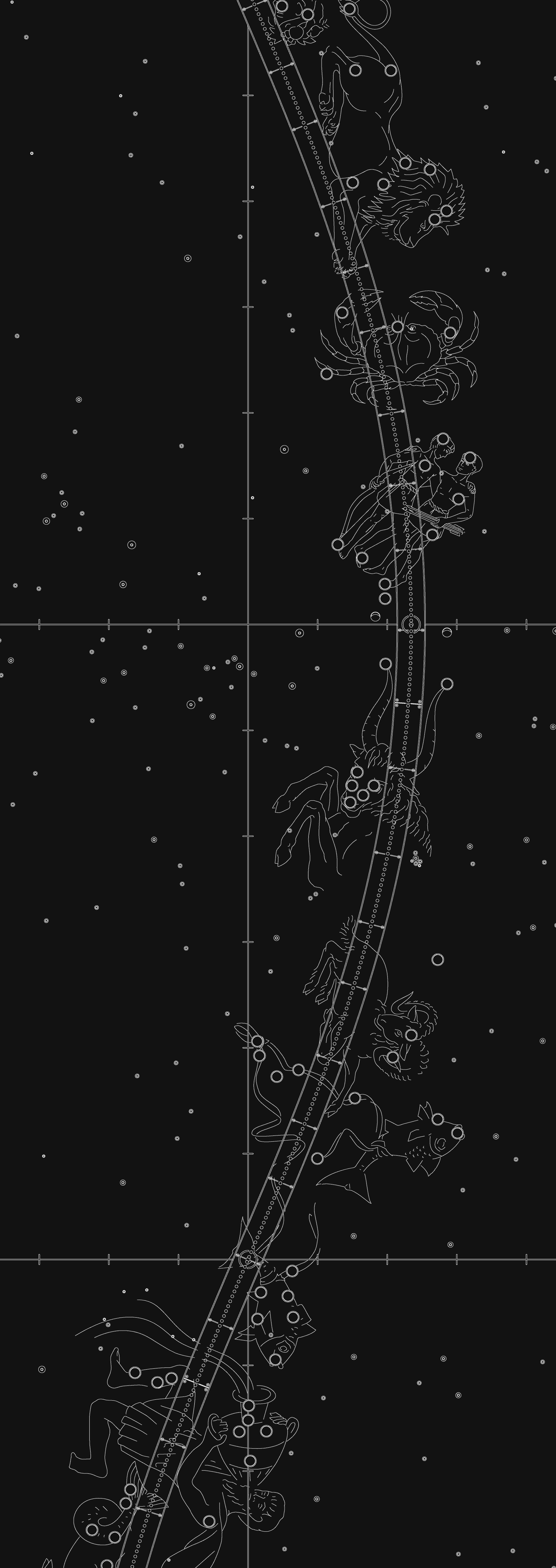The Cosmic Connection
Unimaginably vast and continuously changing, the universe has been growing larger for nearly 14 billion years. We are connected to the origin of the universe by the sparkling ribbon of time that reaches from the Big Bang to today, when we observe what the universe is, understand what it is doing, and appreciate how long all of this has been going on.


The Sparkling Ribbon of Time
The history of the universe is punctuated by significant events represented by the panels above the timeline. Several are grouped near the beginning, when forces were shaping the universe we see today. Another set, near the end of the timeline, reflects recent events which interest us because they involve the evolution of life on Earth.
In the earliest moments when the Big Bang burst open into the universe, the pattern was set for the structure of the universe we see today. That structure is revealed by glowing galaxies of stars. Galaxies congregate in clusters and these clusters themselves are clustered in strands that form webbing that extends throughout the universe. This web work is the ultimate structure of reality.
Nearly 2,200 pieces of celestial jewelry form the ribbon of time. Longtime Friends Of The Observatory board member Kara Knack collected them over nearly 25 years and generously contributed them to form the timeline. The cosmic shapes and designs of the pieces symbolize astronomical objects and our connection with them.


The Big Bang

The Beginning Of Time

The universe blossoms like a skyrocket in an incredibly hot explosion that expands both space and time. After ten billionths of a trillionth of a trillionth of a second, all of the universe we see today is no larger than the size of a small car.
In the next three minutes, the nuclei of hydrogen, helium, and lithium form in a soup of free electrons. For 400,000 years, the expanding, cooling universe is a brilliant, blinding fog of light.
The Curtain of Light

400,000 years after the Big Bang

The universe cools as it continues to expand. Atomic nuclei capture free electrons. For a time, the matter in the universe goes dark and becomes transparent. There is a background of intense light, the fading glow of the Big Bang fireball. We cannot see beyond it.
Faint spots in this curtain of light are zones of slightly cooler, condensed material. Gravity draws more gas to these places. Dark matter influences the growth of structure. Eventually these regions will form a web of galaxy superclusters.
The First Candles in the Darkness

400 million years after the Big Bang

Pockets of gas molecules collapse to form cold, dark clouds. Eventually, the dense concentrations heat up and give off a warm glow of dim light. These become the first stars and the earliest wisps of galaxies.
Time goes by, and the universe continues to expand. Star and galaxy formation signals the creation of the first new light since the Big Bang. As the young galaxies grow, massive black holes affect where stars gather and how galaxies evolve.
The Milky Way Galaxy

1 billion years after the Big Bang

Billions upon billions of galaxies form as the universe ages and expands. Our Milky Way Galaxy is one of them. Some of its first stars come from dwarf galaxies that mingle together. These collisions eventually create the spiral shape of our galaxy. The mixing of stars, gas, and dust sets off bursts of new star formation in the infant Milky Way.
Threads and Ribbons

1.2 billion years after the Big Bang

Dark matter is shaping clumps of gas, clusters of stars, and groups of galaxies into a cosmic web. Giant clusters of galaxy clusters lie at each intersection in the web. These superclusters are the largest structures in the universe. Their galaxies glow with bursts of star formation that light up the cosmic network.


Lights Full On

1.4 billion years after the Big Bang

Galaxy collisions are common in the early universe. These violent encounters trigger bursts of star formation. They also fatten the massive black holes hiding in galaxy cores. That action creates quasars, which are bright, active regions with huge jets at the hearts of galaxies. These quasars, for a time, outshine all the stars in their galaxies.
Making a Neighborhood

9.1 billion years after the Big Bang

The solar system is born. The Sun is part of a generation of stars that form in clouds of gas and dust in the Milky Way Galaxy. The planets of the solar system, their moons, the smaller worlds, and interplanetary debris all come from the same birth cloud as the Sun.
Impacts Call It an Era

9.9 billion years after the Big Bang

Collisions are common in the early solar system as pieces of planet-building debris orbit the Sun. These impacts help build worlds. The scars visible on the Moon are from the last major collisions in the era of planet formation. They coincide with the production of the oldest rocks on Earth.
Getting a Life

10.2 billion years after the Big Bang

Life appears on Earth less than a billion years after our planet formed. The first organisms are tiny microbes that originated in the oceans. Life thrives in the seas.
Hard Bodies

13.1 billion years after the Big Bang

About 3 billion years after the first life appears on Earth, all animals still live in the sea. A rich and diverse population of hard-bodied creatures suddenly spreads through the oceans. Their shells will become early fossils.


High Plains Drifters

13.35 billion years after the Big Bang

Life on Earth expands its habitat from the ocean to the land. Some amphibians join insects and plants and adapt to life on dry land. They claim the new territory and set the stage for new forms of life to evolve.
Bright Young Stars

13.63 billion years after the Big Bang

Star formation continues in the Milky Way Galaxy as new stars are born in clouds of gas and dust. The Pleiades are a group of hot young stars that lie in the direction of the constellation Taurus. They first begin to shine just before the dinosaurs die out on Earth. The earliest mammals are learning to adapt to climate changes on our planet.
Rocking the Cradle

13.69 billion years after the Big Bang

The Orion Nebula is a cloud of gas and dust about 1,350 light-years from Earth. It still cradles some of the youngest stars in the Milky Way Galaxy. Many are still wrapped in the shells of gas and dust that gave them birth. Those clouds also hold the building blocks of planets, and some of the nebula’s stars may have their own solar systems forming around them.
Distant Ancestors

13.696 billion years after the Big Bang

About 3.6 million years ago, one of our early cousins leaves a footprint in fresh volcanic ash near Laetoli, Tanzania. It will be another million years before humans begin using stone tools.
Our Cosmic Connection

13.7 billion years after the Big Bang

About 13.7 billion years after the Big Bang started the expansion of the universe, an upright hominid steps onto the surface of the Moon. He leaves behind a footprint. It’s one small step across time and space.